A couple of weeks ago, much to my delight, my esteemed colleague Bobert forwarded me a clipping from a newspaper from 1926 showing an advert for SodaStream (see picture to the left) and it got me thinking about the origins of SodaStream. I knew the product went back further than my first glimpse of the brand in the 1980s, but I realised that I didn’t know much about the Sodastream story and that it was high time I donned my best investigative deerstalker hat, whipped out the old reporters shorthand notebook and biro and did some hard-nosed reporting on the origins of the great purveyor of fizz. So, here is my breakdown on the history of SodaStream:
Ancient fizztory
Since mankind has been bathing in natural spring water, people have been extolling the virtues of doing so and given that some mineral water is naturally fizzy due to the presence of carbon dioxide, we can safely assume that humans have been drinking fizzy water since the dawn of time. Where we think of the Egyptians watching their boundary stones and whipping their slaves in the pursuit of constructing giant stone monuments we should see them satiating their thirst on a glass of fizzy water, flavoured by honey, lemons or rosewater. Where we dream back to Cleopatra facing off against the romans and bathing in milk we should imagine she did so, comforted by a glass of pop. We don’t know a huge amount about these drinks, but we do know that up to relatively modern times it was common to provide distilled drinks such as beers or other alcohol to ensure that the water was safe to drink and that flavouring water has existed as a practice from ancient times, as much to prevent it tasting foul as to add to the interest.
The invention of carbonation
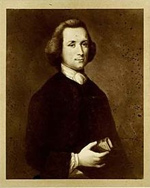 The prodigious chemist, inventor and chum of Benjamin Franklin, Joseph Priestley (1733-1804), spent a period of his life investigating gases and is credited with the discovery of oxygen (though he named the gas with the rather cumbersome title of dephlogisticated air), along with hydrochloric acid, nitrous oxide (laughing gas), carbon monoxide and sulfur dioxide. In 1767, no doubt parched from his efforts generally discovering everything, Joseph produced the first drinkable manmade glass of carbonated water, using a process involving suspending a bowl of water above a beer vat at a local brewery in Leeds, England. The refreshment produced from this experiment enabled him to concentrate on various experiments related to electricity and carbon dioxide over the next few years, before in 1772 he realised it was high time he published his findings in the paper “Impregnating Water with Fixed Air”, but he never exploited the business potential of making fizzy water, believing at the time (erroneously) that the best use of his product was in the preventing of scurvy on naval vessels.
The prodigious chemist, inventor and chum of Benjamin Franklin, Joseph Priestley (1733-1804), spent a period of his life investigating gases and is credited with the discovery of oxygen (though he named the gas with the rather cumbersome title of dephlogisticated air), along with hydrochloric acid, nitrous oxide (laughing gas), carbon monoxide and sulfur dioxide. In 1767, no doubt parched from his efforts generally discovering everything, Joseph produced the first drinkable manmade glass of carbonated water, using a process involving suspending a bowl of water above a beer vat at a local brewery in Leeds, England. The refreshment produced from this experiment enabled him to concentrate on various experiments related to electricity and carbon dioxide over the next few years, before in 1772 he realised it was high time he published his findings in the paper “Impregnating Water with Fixed Air”, but he never exploited the business potential of making fizzy water, believing at the time (erroneously) that the best use of his product was in the preventing of scurvy on naval vessels.
Turning pop into coins
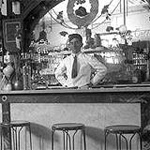 In the late eighteenth century, J J Schweppe developed a process to manufacture carbonated water based on Priestley’s discovery, founding the Schweppes company in 1783 and starting the process of selling fizzy drinks commercially. The soda-fountain became a viable technology in 1832 when John Mathews invented an “apparatus for charging water with carbon dioxide gas” which was mass manufactured for sale to soda fountain owners. Given that fizzy water and mineral water in general had always been perceived as a ‘health’ product, it was natural that this technology was embraced first and foremost by chemists which began offering fizzy drinks, often opening up drinks counters and seated areas as a sideline to their business. In 1886 Coca-Cola, Dr Pepper and Moxie (a lost brand made with the herb gentian) launched and though these flavours would continue to be offered as syrups to be combined with carbonated water (which continues to the present day), they also heralded the arrival of pre-mixed drinks available first in bottles (following the invention of the crown bottle cap in 1892 and glass blowing machines in 1899) and later cans, diverging at this point from the ‘mix your drinks’ philosophy of SodaStream.
In the late eighteenth century, J J Schweppe developed a process to manufacture carbonated water based on Priestley’s discovery, founding the Schweppes company in 1783 and starting the process of selling fizzy drinks commercially. The soda-fountain became a viable technology in 1832 when John Mathews invented an “apparatus for charging water with carbon dioxide gas” which was mass manufactured for sale to soda fountain owners. Given that fizzy water and mineral water in general had always been perceived as a ‘health’ product, it was natural that this technology was embraced first and foremost by chemists which began offering fizzy drinks, often opening up drinks counters and seated areas as a sideline to their business. In 1886 Coca-Cola, Dr Pepper and Moxie (a lost brand made with the herb gentian) launched and though these flavours would continue to be offered as syrups to be combined with carbonated water (which continues to the present day), they also heralded the arrival of pre-mixed drinks available first in bottles (following the invention of the crown bottle cap in 1892 and glass blowing machines in 1899) and later cans, diverging at this point from the ‘mix your drinks’ philosophy of SodaStream.
SodaStream emerges from the primordial fizz
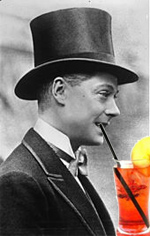 The SodaStream company formed in 1903 as a subsidiary of the London based gin distillers W & A Gilbey Ltd following the development by Guy Gilbey of a forerunner of what would become the “Apparatus for aerating liquids”. Sold to the upper classes, including the royal family the machine enables butlers to make soda water for their employers and visiting guests. A fairly sizable contraption utilising a 28lb gas cylinder, producing 1/2 a pint of fizzy water per go. SodaStream also product a version named the “Monster Machine” which is available to shops to enable them to make fizzy mineral water for their customers. During the 1920s SodaStream produces its first flavour concentrates for mixing with fizzy water, initially available in both liquid and powder form, with fantastic sounding flavours including cherry ciderette and sarsaparilla. Late in the decade the British Royal family start going SodaStream crazy. After receiving 2 machines in 1928 the Prince of Wales grants a Royal warrant to the company and the model becomes known as “the Prince of Wales machine”. The Royal navy get on-board (excuse the pun), making extensive use of the machines and fitting the Royal Yacht Britannia with a plethora of the devices and a massive supply of syrups. The Prince of Wales considers starting a blog about SodaStream before realising the internet hasn’t been invented yet.
The SodaStream company formed in 1903 as a subsidiary of the London based gin distillers W & A Gilbey Ltd following the development by Guy Gilbey of a forerunner of what would become the “Apparatus for aerating liquids”. Sold to the upper classes, including the royal family the machine enables butlers to make soda water for their employers and visiting guests. A fairly sizable contraption utilising a 28lb gas cylinder, producing 1/2 a pint of fizzy water per go. SodaStream also product a version named the “Monster Machine” which is available to shops to enable them to make fizzy mineral water for their customers. During the 1920s SodaStream produces its first flavour concentrates for mixing with fizzy water, initially available in both liquid and powder form, with fantastic sounding flavours including cherry ciderette and sarsaparilla. Late in the decade the British Royal family start going SodaStream crazy. After receiving 2 machines in 1928 the Prince of Wales grants a Royal warrant to the company and the model becomes known as “the Prince of Wales machine”. The Royal navy get on-board (excuse the pun), making extensive use of the machines and fitting the Royal Yacht Britannia with a plethora of the devices and a massive supply of syrups. The Prince of Wales considers starting a blog about SodaStream before realising the internet hasn’t been invented yet.
Getting the product to the little guy
![]() The 1950s, an era of consumerism and gadgets rivalling our present day obsession, saw the production of the “SodaStream Popular Outfit” a device designed for use in the average home. It is the first device to resemble the modern version, making use of an 8oz bottle and a much less hefty 4lb gas cylinder. Fourteen flavours are available including 2 “diet” versions without sweetening. SodaStream is found in larger size in many shops and bars and a minor version finds its way into the homes of hard working Joes across the land. Following years under the Gilbey firm, Reckitt & Coleman buys SodaStream in 1971, moves to Peterborough and misguidedly focus on developing the home brew beer kit. This period becomes known as the dark ages or “flat” period.
The 1950s, an era of consumerism and gadgets rivalling our present day obsession, saw the production of the “SodaStream Popular Outfit” a device designed for use in the average home. It is the first device to resemble the modern version, making use of an 8oz bottle and a much less hefty 4lb gas cylinder. Fourteen flavours are available including 2 “diet” versions without sweetening. SodaStream is found in larger size in many shops and bars and a minor version finds its way into the homes of hard working Joes across the land. Following years under the Gilbey firm, Reckitt & Coleman buys SodaStream in 1971, moves to Peterborough and misguidedly focus on developing the home brew beer kit. This period becomes known as the dark ages or “flat” period.
The Modern Era dawns
By 1973 a group of entrepreneurs, including East Anglia TV, decide it’s high time that SodaStream hits the big time. They design a new, modern looking and cheaper to produce, home model, targeted at the mass-market and negotiate a marketing agreement with domestic equipment manufacturer Kenwood. SodaStream trucks start carrying the distinctive SodaStream logo, brightening up grim trips on the motorway. A range of new drinks makers are launched setting a design style which will continue to be used until 1995. In 1979 SodaStream commission their first television advert, pooling up all their money to spend on legendary TV magician/comedian Tommy Cooper. Tommy hides behind a table, pops up gurning like a loon and quips the immortal lines “Just like that!” The public’s attention is piqued and sales increase by 50%.
The salad days (Get busy with the Fizzy)
The 1980s arrive and being able to product your own range of fizzy drinks chimes perfectly with the decadent, nihilistic approach of a generation grappling with new romanticisim, Ronald Reagan and Margaret Thatcher. A genius advertising executive coming back from an A-ha gig comes up with the slogan “Get busy with the fizzy” capturing the aspirations of the consumer, leading to massive SodaStream sales. 1980 also sees the birth of this author, a lifetime of dedication to fizzy drinks, but a twinkle in his eye. SodaStream HQ, now christened “The Dream Factory” sets its executives the challenge of developing new products leading to legendary obscure device: “Mr Frothy Milkshake Machine” which receives unprecedented pre-orders of 3,500. In 1983 British Prime Minister Margaret Thatcher hosts a reception for successful companies at 10 Downing Street including SodaStream (it is not documented what flavours were consumed at the event).
We’ve hit the big time
Sodastream’s growing success has not gone unnoticed and in 1985 Cadbury Schweppes puts in a healthy offer for SodaStream. The resources of this juggernaut help to position the brand to compete in the competitive soft drinks market. Exporting worldwide grows. Most importantly, the tie-in with Schweppes enables SodaStream to offer branded flavours including Tizer, Fanta, Sunkist and Irn-Bru. By the end of the 80s sales turnover tops £15 million, £12 million of this coming from the UK. The SodaStream Christmas party of 1989 features Andrew Ridgeley of Wham fame and Samantha Fox, legendary tabloid pin-up jumping out of a cake.
The bubble bursts
By the mid 1990s consumers have tired of the novelty of making their own drinks. Cadbury Schweppes struggles to position the SodaStream brand amidst their other soft drinks endeavours and investment in advertising falls. Supermarkets in the UK start producing their own branded colas and lemonades at ridiculously cheap prices and it gets harder and harder to pick up SodaStream syrups or cylinders. By 1997 Cadbury Schweppes sells SodaStream following a management buy-out. In 1998 a new crazy spiral helter skelter bottle is launched, but the excitement of this twisty bottle fails to match previous efforts and SodaStream spends some time in the wilderness.
A new hope (there’s still some gas in the tank)
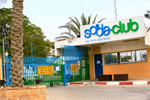 In the background Israel founded Soda-Club has been slowly growing its operation under the careful tutelage of Peter Wiseburgh (Sodastream’s Israel distributor as early as 1978), developing their own home-carbonation systems. By 1998, with SodaStream value at its lowest they are able to purchase the brand name, gaining legitimacy as serious contender in the drinks market, forming the world’s largest home-carbonation company. By 2000 with some new models, SodaStream is back gaining traction, slowly expanding their operation to the US and uninteresting European country Belgium. Production has moved to Germany and Israel and diversified products such as the “Fire Kwencher” range of CO2 fire extinguishers help to grow the company.
In the background Israel founded Soda-Club has been slowly growing its operation under the careful tutelage of Peter Wiseburgh (Sodastream’s Israel distributor as early as 1978), developing their own home-carbonation systems. By 1998, with SodaStream value at its lowest they are able to purchase the brand name, gaining legitimacy as serious contender in the drinks market, forming the world’s largest home-carbonation company. By 2000 with some new models, SodaStream is back gaining traction, slowly expanding their operation to the US and uninteresting European country Belgium. Production has moved to Germany and Israel and diversified products such as the “Fire Kwencher” range of CO2 fire extinguishers help to grow the company.
The modern day (bubbling up)
In 2007, an injection of capital from the Fortissimo Capital Fund following them acquiring a controlling interest in Soda-Club leads to the development of new and more popular models the Pure (available in a range of colours) and the Penguin (highly desirable). SodaStream begin firmly marketing their environmental credentials and by 2008 have re-launched in France, Baltic Countries, Italy and Hungary. SodaStream launches on the NASDAQ stock market and perfoms favourably. In 2010 an advertising executive racking his brains for a slogan to rival Tommy Cooper’s “Just like that”, suddenly realises that “if it ain’t broke why fix it”. Google searches report that the new range of SodaStream machines is winning back a generation of new customers largely on the basis of nostalgia for the 80s heyday, but that consumers are dismayed at the loss of the catchphrase they knew and loved. SodaStream invests £3million in a marketing campaign which brings back immortal slogan “Get Busy with the Fizzy”. Jaws drop, supermarkets start stocking the products and people start buying SodaStream in earnest again. By 2011 SodaStream is stocked in over 45,000 retail locations worldwide (41 countries), but importantly is also backed up by access to the products on websites, so everyone can buy SodaStream even if they don’t have the product in their home town.
What’s next for SodaStream?
SodaStream continue to develop new flavours and products – focusing on stylish new machines such as the “Revolution” and “Source” drinksmakers. They courted controversy in 2011 due to having factories based in the West Bank settlement leading to some protests. As recently as Christmas 2012 SodaStream generated a splash due to advertising networks in the UK refusing to broadcast their most recent television advertisment on the basis that they unfairly “denigrated” the bottled drinks markets. In other words, the advert suggests that by using SodaStream you can save using 1,000 bottles per year which was deemed to be too open an attack on big drinks companies such as Coca Cola. SodaStream contends that there is an important point to be made here about waste and sustainability…. and of course they want to sell drinks makers. This debate will no doubt continue over the coming year. Will 2013 be the year for SodaStream to grow their market share or will consumers get tired of the novelty of making their own drinks again? Will 2013 see SodaStream heading to space? Will there be flying bottles in year’s to come and fizzy water from the mains?
Time will tell, but well…. you know all this typing is thirsty work. I’ve consumed a can of Coke while writing this article and now I’m off to pour a glass of SodaStream Ginger Ale so I’ll leave you with a thought: Isn’t there room for all drinks – manufactured and homemade, fizzy and still – on this big wide world of ours? Can’t we all just get along or are we simply doomed to repeat the fizz explosions of the past?
If you got this far, begin your SodaStream adventure by picking up a drinks maker here.
Sources:
http://inventors.about.com/od/foodrelatedinventions/a/soft_drinks.htm
http://www.essortment.com/history-soft-drinks-40721.html
http://en.wikipedia.org/wiki/Carbonated_water
http://en.wikipedia.org/wiki/Joseph_Priestley
http://www.truetex.com/priestley-1772-impregnating_water_with_fixed_air.pdf
http://inventors.about.com/od/sstartinventions/a/soft_drink.htm
http://www.sodastream.com/companymilestones
http://en.wikipedia.org/wiki/Sodastream
http://en.wikipedia.org/wiki/Gilbey%27s_Gin
http://newsfeed.time.com/2012/11/28/sodastream-ad-yanked-in-britain-for-angering-coca-cola-and-pepsi/
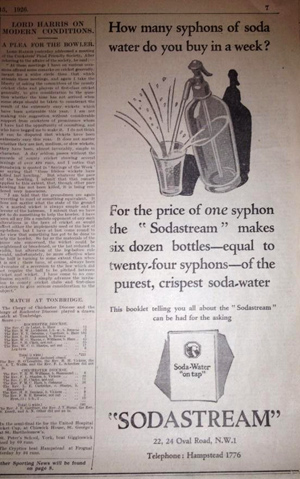
What a lot of hard work has been put into this. All very enjoyable reading.
[…] soda makers were invented in 1903, but they weren’t well known until private equity firm Fortissimo acquired the brand in 2006 […]
[…] in the United States, but it’s actually an old company—a version of the appliance was invented in 1903—and in other countries it’s been waging a campaign against Coke and Pepsi for decades. In the […]
thank you for your great informations & links!
Dear Madam/Sir
Please inform me as to when was the round rubber carbonating button introduced to the Sodastream machine
Very informative, however if you check the Patent records my Great Grandfather was the Inventor – William Hucks. He and his father also William Hucks worked with the Gilbey family in Camden.
Love your sodastream site !
For my health I consume very ultra low carb so it’s been fantastic to have something special instead of boring old flat water and I refuse to continually buy water in plastic bottles.
My SodaStream is literally used for sparkling water and I add pure lemon juice. It’s so great to have this as a handy facility and I use it at least three to four times a day.
I have had a Sodastream for over 20 years. Our first was in the 90s and we’ve had our Spirit now for two years.
Thank you SodaStream x